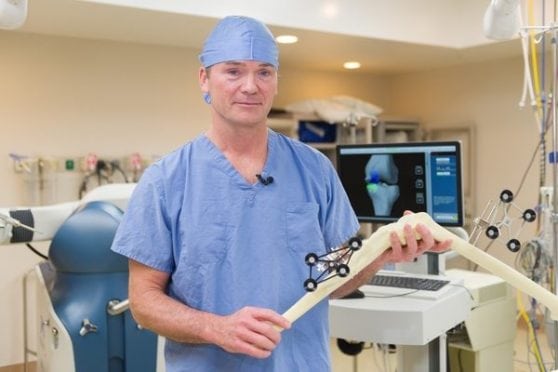
What has one arm, 3D high-definition visualization, a reputation as a good listener and is obsessively precise in everything it does?
It’s the surgical robot known as Mako, which could become a new mechanical friend for anyone needing a partial knee replacement or total hip replacement. Surgeons use Mako’s robotic arm to increase accuracy, minimize incision size and speed recovery time.
“I think it has revolutionized the process,” says Dr. Robert Belniak, the senior attending surgeon at The Hospital of Central Connecticut.
Here are a few differences between Mako and traditional knee surgery:
- Average Hospital Stay: 1-3 days (traditional: 3-7 days).
- Average Incision Length: 4-6 inches (traditional: 8-10 inches).
- Possible swelling: Several weeks (traditional: 3-6 months).
- Return to driving a car: Within 2 weeks (traditional: 6-8 weeks).
The robotic arm’s precision makes the difference with Mako. After a CT scan of a patient’s knee or hip, Mako makes a virtual model of the prosthesis, then the surgeon guides the placement of the patient-specific prosthesis.
“Being a techie and an early adopter of technology in general, I thought it was very cool,” says Mick Marsden of East Haddam, who chose Mako after enduring knee problems for 16 years. “I was back at work (as a realtor) in just under 30 days and taking flying lessons in a plane a month after surgery.”
Are you a candidate for Mako?
Knee resurfacing: A patient should have early- to mid-stage osteoarthritis in one or two of the knee’s three compartments.
Total hip replacement: Your physician will check for symptoms such as pain or stiffness while walking, limping, pain that radiates to the groin or other areas and a history of failed non-surgical treatments.
For more information on Mako at Hartford HealthCare, click here and also watch this video:
A patient’s story:

